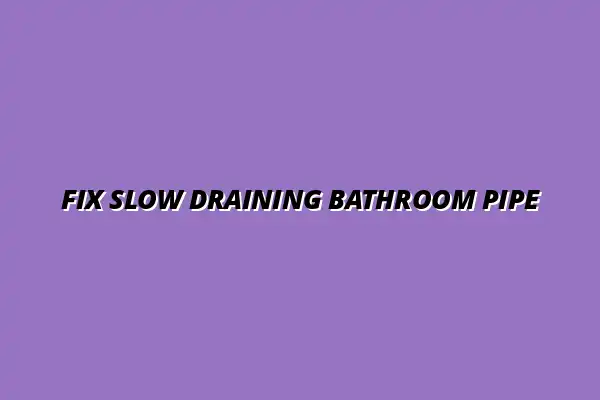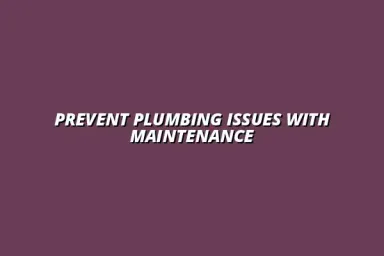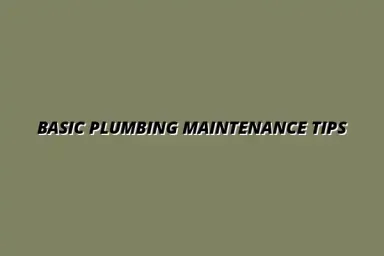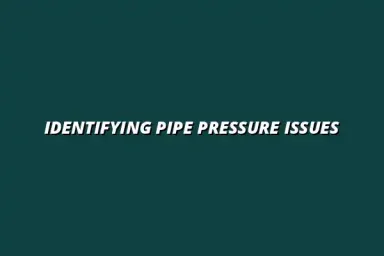Understanding the Causes of Slow Draining Pipes in the Bathroom
Slow draining pipes in the bathroom can be a frustrating experience. To solve the problem, we need to understand what causes it. Some common reasons behind slow drains include the accumulation of hair, soap scum, and mineral buildup from hard water.
Each of these factors plays a significant role in hindering the flow of water. By recognizing these causes, we can take the necessary steps to maintain our bathroom drains and prevent slow draining issues from arising. For quick solutions to common sink blockages, check out these quick ways to unblock a sink.
Common Reasons Behind Slow Draining Pipes
Several issues can contribute to slow draining pipes, with the most common being the buildup of hair and soap scum. When we shower or wash our hands, hair tends to shed and mixes with soap residue, leading to clogs over time.
Another major culprit is mineral buildup from hard water. This buildup can create a thick layer along the insides of the pipes, narrowing the passage for water to flow through. Here are some common reasons behind slow drains:
- Accumulation of hair and soap scum
- Mineral buildup from hard water
- Foreign objects stuck in the drain
- Tree roots infiltrating the pipes
Accumulation of Hair and Soap Scum
As mentioned, hair and soap scum often combine to form stubborn clogs. This mixture can create a solid mass that easily traps more debris, worsening the drainage problem. Regularly cleaning the drain cover can help minimize this buildup.
Additionally, using a hair catcher can be a great preventative measure to stop hair from entering the drain. This simple step saves time and effort in the long run! Learning how to effectively unclog your bathroom drain easily can save you a lot of hassle.
Mineral Buildup from Hard Water
Hard water is common in many households and contains minerals like calcium and magnesium. Over time, these minerals can accumulate, leading to significant buildup that restricts water flow. If you notice that your pipes are starting to drain slowly, hard water may be a factor.
To combat this issue, consider using a water softener. This device can help reduce mineral content in your water and promote better pipe health. Regular water pipe cleaning is also crucial for preventing issues.
How Clutter Accumulates in Bathroom Drains
Bathroom products are a significant source of clutter in drains. From shampoo to toothpaste, many items can inadvertently make their way down the drain. When these products mix with hair and soap scum, they can create stubborn clogs.
It's essential to be mindful of what goes down the drain and take steps to limit these occurrences. Understanding how clutter accumulates helps us prevent slow draining pipes. For more comprehensive plumbing maintenance, consider these essential plumbing maintenance tips for homes.
The Role of Bathroom Products in Clogs
Bathroom products contribute heavily to drain issues, especially if used excessively. Some of these products include:
- Shampoo and conditioner
- Body wash and soap
- Toothpaste and mouthwash
- Makeup and skincare products
When these items are washed down the drain, they can combine with existing debris, creating a clog that can be tough to eliminate. Regular cleaning can help reduce the impact of these products on drainage.
Impact of Improper Disposal Practices
Improper disposal practices significantly affect bathroom drains. Flushing items that are not meant to go down the toilet, like wipes and hygiene products, can lead to severe blockages. Always dispose of such items in the trash can instead of the toilet.
Moreover, educating everyone in the household about proper disposal habits can help ensure that drains stay clear and function well!
Effective Methods to Fix a Slow Draining Pipe
Fixing a slow draining pipe can often be tackled without calling a plumber. Some methods are straightforward and don’t require many tools. However, before you start, it's good to know which method suits your specific clog situation!
In this section, we'll explore a variety of solutions, from simple plunging techniques to natural remedies that can help you restore the flow in your bathroom pipes. If you suspect a leak, learning how to detect hidden pipe leaks at home is a valuable skill.
Using a Plunger for Minor Clogs
One of the easiest ways to address a minor clog is with a plunger. This handy tool uses suction to dislodge debris stuck in the pipes. Make sure to cover the overflow drain with a wet cloth to enhance suction during the process.
Here’s a quick guide on how to plunge effectively:
- Fill the sink or tub with enough water to cover the plunger’s cup.
- Place the plunger over the drain and ensure a good seal.
- Push down firmly and pull up quickly, repeating this action for about 15-20 seconds.
When Plunging is Not Enough
If you've tried plunging and the water is still draining slowly, it may be time to look for deeper clogs. Sometimes, hair or debris may be lodged further down the pipe. In such cases, you might need to try other methods.
Remember, continuous slow drainage can be a sign of a more serious issue, so keep an eye on the symptoms!
Utilizing a Drain Snake for Deeper Clogs
A drain snake is a flexible tool that can reach clogs deeper in your plumbing system. It's effective for removing hair, soap scum, and other stubborn blockages. Here’s how to operate a drain snake safely:
- Insert the snake into the drain slowly, twisting it as you go.
- When you feel resistance, stop and turn the handle to break up the clog.
- Once you feel it loosen, pull the snake out while continuing to turn it.
Tips for Avoiding Damage to Pipes
While using a drain snake, it’s essential to be gentle to avoid damaging your pipes. Here are some tips:
- Avoid using excessive force; if you hit a hard obstruction, back off a bit.
- Choose an appropriate size snake for your drain type.
- Always clean the snake after use to prevent rust or corrosion.
Employing Natural Remedies for Drain Cleaning
If you're looking for eco-friendly options to unclog your bathroom drains, natural remedies can be quite effective! They’re safe for your pipes and the environment. Two popular methods include:
- Baking Soda and Vinegar Solution: Pour half a cup of baking soda followed by half a cup of vinegar down the drain. Let it fizz for 30 minutes, then flush with hot water.
- Salt and Hot Water Method: Mix half a cup of salt with hot water and pour it down the drain to help dissolve buildup.
Benefits of Using Natural Remedies
These natural options can help clear clogs while minimizing potential damage from harsh chemicals. Not only are they simple to use, but they also promote a healthier home environment! For more serious plumbing issues, consider contacting a local professional, such as a plumber in Billesley, Birmingham.
Maintaining Healthy Drain Flow to Prevent Future Issues
Once you’ve managed to fix your slow draining pipe, it’s vital to maintain its health. Regular upkeep can save you from future headaches. Let’s dive into effective practices to keep those drains flowing freely!
By being proactive, you can significantly reduce the risk of clogs and drainage problems in your bathroom. Addressing plumbing issues promptly and effectively can prevent costly repairs down the line, and regular preventative maintenance goes a long way in safeguarding your home’s plumbing system.
Regular Cleaning Practices for Bathroom Drains
Implementing consistent cleaning practices can greatly enhance the performance of your bathroom drains. Simple changes can make a big difference!
- Consider using strainers to catch hair and debris before they enter the drain.
- Schedule periodic deep cleaning sessions using natural cleaning agents.
Using Strainers to Catch Debris
Strainers are a simple yet effective tool for preventing clogs. They trap hair and soap scum, making it easier to keep your drains clear.
Be sure to clean the strainer regularly to maintain its effectiveness!
Understanding the Importance of Professional Maintenance
While DIY methods are often effective, knowing when to call in a professional is essential. Regular plumbing inspections can catch issues before they escalate. Knowing when to call a professional is key—this can save you from more costly repairs and potential water damage.
- Schedule inspections at least once a year to maintain your plumbing system.
- Understand the costs involved in preventive plumbing services and weigh them against potential repairs.
Costs and Benefits of Preventive Plumbing Services
Investing in preventive maintenance can save you money in the long run by avoiding costly repairs. It ensures your plumbing system remains in top shape and reduces the risk of unexpected emergencies! For example, regularly checking for and addressing leaking water heater pipes is essential.
Addressing Common Questions About Bathroom Drain Issues
It’s natural to have questions about bathroom drain issues. Understanding them can empower you to take action sooner and more effectively!
Let’s clear up some common questions regarding maintenance and repairs.
How Long Does It Take to Fix a Slow Draining Pipe?
The time it takes to fix a slow draining pipe can vary based on the severity of the clog. Minor clogs might take just a few minutes, while deeper issues could require additional time and tools. Always consider the method you’re using!
What Are the Long-Term Effects of Ignoring Slow Drains?
Ignoring slow drains can lead to more significant problems, such as complete blockages or even pipe damage. Over time, this can result in costly repairs and inconvenience!
Can Slow Draining Pipes Cause Water Damage?
Yes, slow draining pipes can lead to water damage in your home if not addressed promptly. Water pooling can cause mold growth and structural damage, making it essential to take action.
Final Thoughts on Maintaining Optimal Bathroom Drain Functionality
Maintaining your bathroom drains doesn’t have to be complicated! With a little effort and the right methods, you can enjoy smooth drainage and peace of mind.
Let’s recap some key takeaways to keep your drains in top condition!
Key Takeaways for Homeowners
- Be proactive with regular maintenance to prevent clogs.
- Utilize natural remedies for drain cleaning.
- Know when to seek professional help to avoid larger issues.
Encouraging Proactive Drain Care Habits
Establishing good habits is crucial for maintaining optimal bathroom drain functionality. By staying vigilant and addressing issues early, you can avoid many problems and enjoy a smoother, hassle-free experience in your bathroom!

 Kiran Almasi
Kiran Almasi

